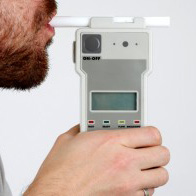CONSTRUCTION COMPANIES ON THE RISE – SO IS SUBSTANCE ABUSE
Construction and building is booming in the United States for the most part. This is true in one of the fastest growing areas of our country – Myrtle Beach, SC. Population growth is exploding in South Carolina and much of it is happening in the eastern upstate. With this explosion in growth comes a higher demand for construction workers including heavy equipment operators, tradesmen and laborers. Not only is the demand for these workers getting higher – so are the workers.
“Not only is the demand for these workers getting higher – so are the workers.”
 According to a recent report by the Substance Abuse and Mental Health Services Administration (SAMSHA), the construction industry now has the second highest percentage (14.3%) of drug users on the job. This percentage trails the accommodations and food services industry which is the leader at 16.9% of drug users. The construction industry also comes in second place on the heels of the mining industry when it comes to heavy alcohol use.
According to a recent report by the Substance Abuse and Mental Health Services Administration (SAMSHA), the construction industry now has the second highest percentage (14.3%) of drug users on the job. This percentage trails the accommodations and food services industry which is the leader at 16.9% of drug users. The construction industry also comes in second place on the heels of the mining industry when it comes to heavy alcohol use.
According to Tom Jackson, in his story published in Equipment World, “Drugs bring big problems. The Department of Labor says drug and alcohol abuse contribute to up to 65 percent of on-the-job accidents and up to 50 percent of workers’ compensation claims. Substance abusers are absent from work an average of five days a month, are ten times more likely to steal from the company or other employees, use three times the normal level of employee health benefits and incur 300 percent higher medical costs.”
While some companies perform pre-employment drug screening of applicants, very few perform ongoing random drug screening to maintain a substance free workplace. Even fewer companies have comprehensive substance free workplace policies in place to implement such a program and provide protection for the company, its employees and customers. Having an effective policy in place allows a company to perform random testing, post accident testing and reasonable suspicion testing. Testing without a policy in place exposes the company to potential liability and claims of discrimination. Training should also be provided to train supervisors on how to detect, observe and report use and abuse on the job.
Partnering with a professional consultant and company that can assist in setting up and managing a substance free workplace is  becoming far more cost effective and beneficial to these extremely busy and fast moving construction companies. Carolina Testing based in Conway, SC is one local, responsive and professional company able to provide a full array of substance free workplace services. Services include simple drug screening services to fully managed services including consulting services, policy creation, program management, employee screening and random program management.
becoming far more cost effective and beneficial to these extremely busy and fast moving construction companies. Carolina Testing based in Conway, SC is one local, responsive and professional company able to provide a full array of substance free workplace services. Services include simple drug screening services to fully managed services including consulting services, policy creation, program management, employee screening and random program management.

 The National Institute on Drug Abuse
The National Institute on Drug Abuse



 CBD is one of the hundreds of compounds found in the cannabis plant. This same plant also contains the more well known psychoactive compound, delta-9-tetrahydrocannabinnol, more commonly referred to as THC. CBD is a cannabinoid and it does share some similarities with THC, however, it does not produce a “high” when used or consumed. While research on CBD is still in its infancy stages, initial studies suggest CBD users experience some therapeutic and medical benefits from conditions such as seizures, post traumatic stress disorder (PTSD), pain, cancer, swelling/inflammation and some neurological disorders such as anxiety and depression.
CBD is one of the hundreds of compounds found in the cannabis plant. This same plant also contains the more well known psychoactive compound, delta-9-tetrahydrocannabinnol, more commonly referred to as THC. CBD is a cannabinoid and it does share some similarities with THC, however, it does not produce a “high” when used or consumed. While research on CBD is still in its infancy stages, initial studies suggest CBD users experience some therapeutic and medical benefits from conditions such as seizures, post traumatic stress disorder (PTSD), pain, cancer, swelling/inflammation and some neurological disorders such as anxiety and depression.


 Alcohol abusers number over 14 million in the United States alone and many of them are gainfully employed in our workplaces. Alcohol is responsible for a large number of workplace accidents and injuries. In addition, alcohol abuse in the workplace leads to billions of dollars in lost revenues for businesses due to absences, lower productivity, employee turnover, rising health costs and more.
Alcohol abusers number over 14 million in the United States alone and many of them are gainfully employed in our workplaces. Alcohol is responsible for a large number of workplace accidents and injuries. In addition, alcohol abuse in the workplace leads to billions of dollars in lost revenues for businesses due to absences, lower productivity, employee turnover, rising health costs and more. education, supervisor training and testing. Providing educational opportunities for employees on the effects of alcohol use and abuse in the workplace is the first step. Part of that education must include making employees aware of the resources available to them if they do have a problem. Employers should have literature and materials available to all employees about local resources or the company’s Employee Assistance Program (EAP). Supervisors must be trained in identifying and observing signs of substance use on the job. They must be trained on how to confront the situation properly and how to get the employee tested if need be. The company’s substance free workplace program must include the ability to test employees for alcohol use in situations like reasonable suspicion, post-accident or random testing.
education, supervisor training and testing. Providing educational opportunities for employees on the effects of alcohol use and abuse in the workplace is the first step. Part of that education must include making employees aware of the resources available to them if they do have a problem. Employers should have literature and materials available to all employees about local resources or the company’s Employee Assistance Program (EAP). Supervisors must be trained in identifying and observing signs of substance use on the job. They must be trained on how to confront the situation properly and how to get the employee tested if need be. The company’s substance free workplace program must include the ability to test employees for alcohol use in situations like reasonable suspicion, post-accident or random testing. DRUG TESTING AND THE AMERICANS WITH DISABILITIES ACT (ADA)
DRUG TESTING AND THE AMERICANS WITH DISABILITIES ACT (ADA)

 Employers and employees have a responsibility to contribute to a productive, positive, comfortable and safe work environment. Implementing a drug testing program can help to accomplish these desired outcomes. The following lists the most common reasons employers begin and continue substance free workplace programs.
Employers and employees have a responsibility to contribute to a productive, positive, comfortable and safe work environment. Implementing a drug testing program can help to accomplish these desired outcomes. The following lists the most common reasons employers begin and continue substance free workplace programs. employees safe from harm and employers safe from liability.
employees safe from harm and employers safe from liability.